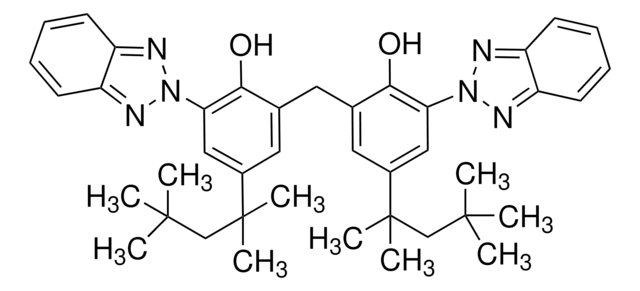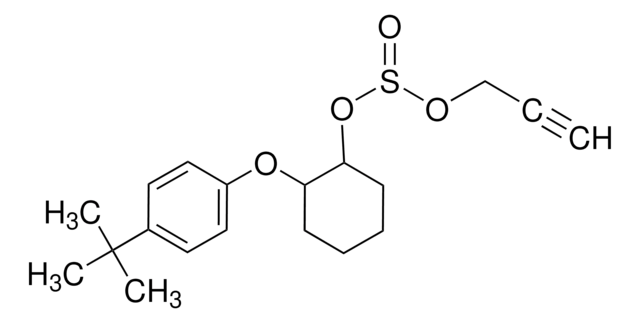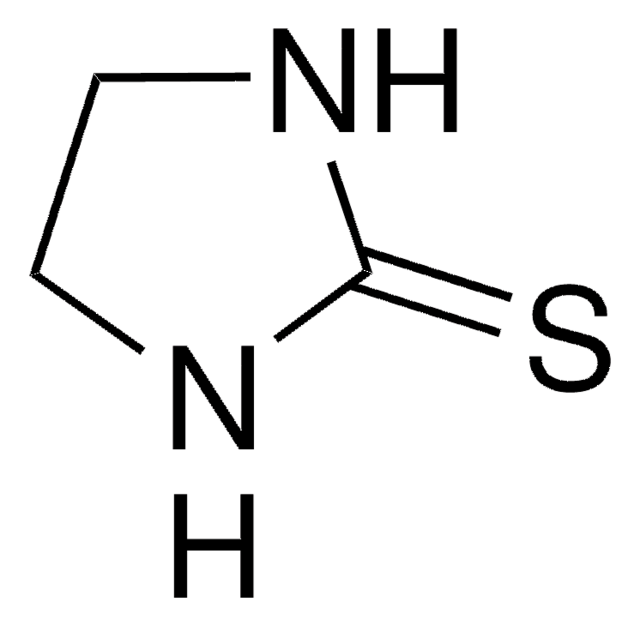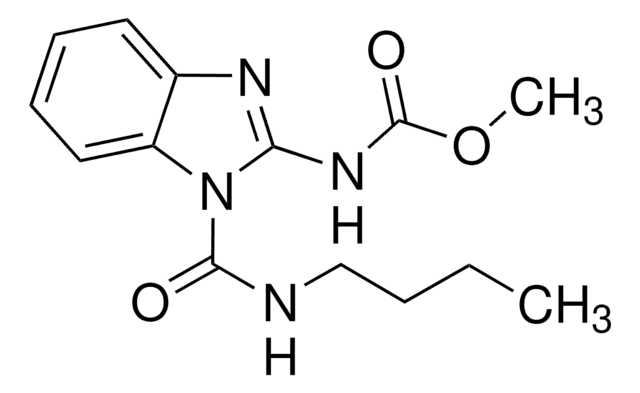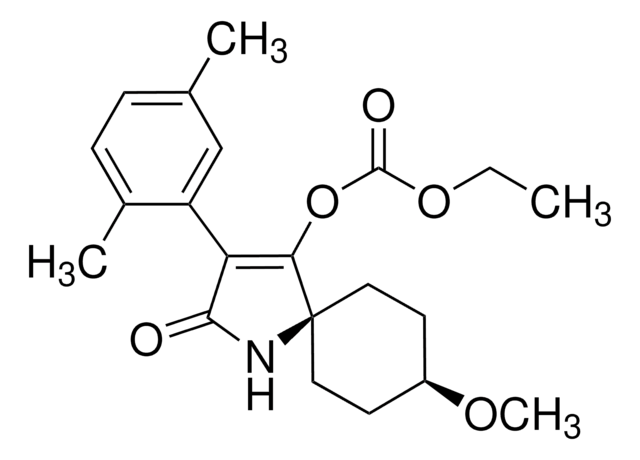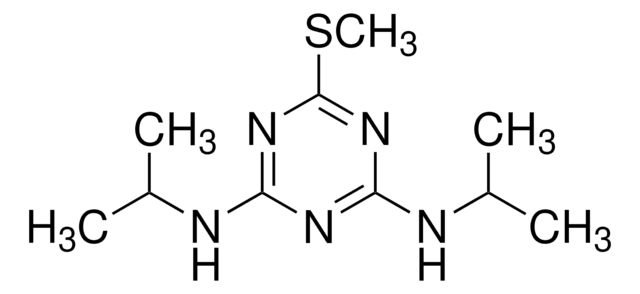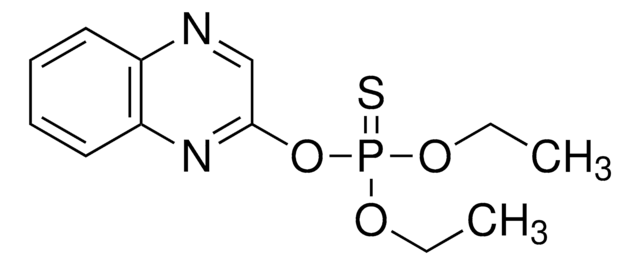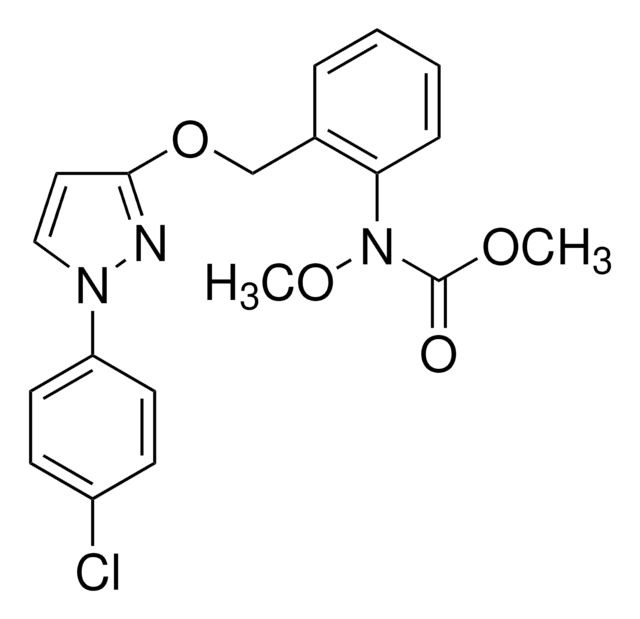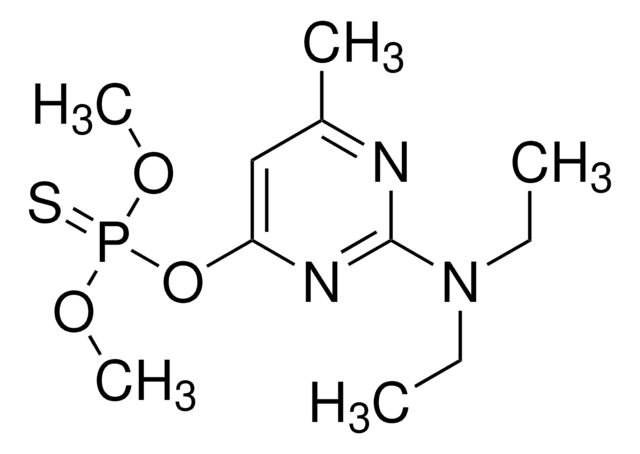32051
Propargit
PESTANAL®, analytical standard, technical mixture
Sinónimos:
2-(4-tert-Butylphenoxy)cyclohexyl 2-propynyl sulfite
About This Item
Productos recomendados
grado
analytical standard
Nivel de calidad
Línea del producto
PESTANAL®
caducidad
limited shelf life, expiry date on the label
técnicas
HPLC: suitable
gas chromatography (GC): suitable
aplicaciones
agriculture
cleaning products
cosmetics
environmental
food and beverages
personal care
Formato
neat
temp. de almacenamiento
2-8°C
cadena SMILES
CC(C)(C)c1ccc(OC2CCCCC2OS(=O)OCC#C)cc1
InChI
1S/C19H26O4S/c1-5-14-21-24(20)23-18-9-7-6-8-17(18)22-16-12-10-15(11-13-16)19(2,3)4/h1,10-13,17-18H,6-9,14H2,2-4H3
Clave InChI
ZYHMJXZULPZUED-UHFFFAOYSA-N
¿Está buscando productos similares? Visita Guía de comparación de productos
Descripción general
Aplicación
- Olive oil samples using GC–MS and HPLC–MS methods.
- Tea leaf extract using GC-negative chemical ionization mass spectrometry (GC-NCI-MS) and UHPLC-tandem mass spectrometry (UHPLC-MS/MS).
- Apple leaf extract using HPLC method.
Información legal
Palabra de señalización
Danger
Frases de peligro
Consejos de prudencia
Clasificaciones de peligro
Acute Tox. 2 Inhalation - Aquatic Acute 1 - Aquatic Chronic 1 - Carc. 2 - Eye Dam. 1 - Skin Irrit. 2
Código de clase de almacenamiento
6.1A - Combustible acute toxic Cat. 1 and 2 / very toxic hazardous materials
Clase de riesgo para el agua (WGK)
WGK 3
Punto de inflamabilidad (°F)
160.5 °F - Pensky-Martens closed cup
Punto de inflamabilidad (°C)
71.4 °C - Pensky-Martens closed cup
Equipo de protección personal
Eyeshields, Faceshields, Gloves, type ABEK (EN14387) respirator filter
Elija entre una de las versiones más recientes:
Certificados de análisis (COA)
¿No ve la versión correcta?
Si necesita una versión concreta, puede buscar un certificado específico por el número de lote.
¿Ya tiene este producto?
Encuentre la documentación para los productos que ha comprado recientemente en la Biblioteca de documentos.
Los clientes también vieron
Nuestro equipo de científicos tiene experiencia en todas las áreas de investigación: Ciencias de la vida, Ciencia de los materiales, Síntesis química, Cromatografía, Analítica y muchas otras.
Póngase en contacto con el Servicio técnico